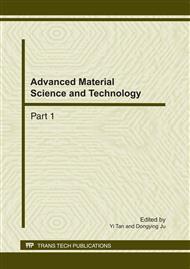p.1167
p.1171
p.1175
p.1179
p.1185
p.1189
p.1193
p.1197
p.1201
Effects of Curing Method on the Gas Separation Performance of Phenolic Resin/Poly(vinyl Alcohol)-Based Carbon Membrane Materials
Abstract:
A novel cheap blended precursor phenolic resin/poly(vinyl alcohol) (PR/PVA) was developed to prepare carbon membranes. The effect of two curing methods (i.e., crosslinker and preoxidation) on the gas separation performance of their derived carbon membranes was investigated. Thermogravimetric analysis (TGA), Differential scanning calorimetry (DSC) and Fourier transform infrared (FTIR) spectroscopy were used to analyze the thermal stability of precursor and the changes in functional groups on membrane surface. The gas permeation of carbon membranes was tested for H2 and N2. The results show that PR, PR/PVA, and two PR/PVA cured samples have three thermal degradation stages. The thermal stability for original PR/PVA membrane is significantly improved via the method of preoxidation or crosslinker. Similar crosslinking structure is formed by the two curing methods. However, carbon membranes from crosslinker method present two-fold higher in hydrogen permeability and four-fold higher in selectivity than that from preoxidation method.
Info:
Periodical:
Pages:
1185-1188
Citation:
Online since:
February 2011
Authors:
Keywords:
Price:
Сopyright:
© 2011 Trans Tech Publications Ltd. All Rights Reserved
Share:
Citation:


